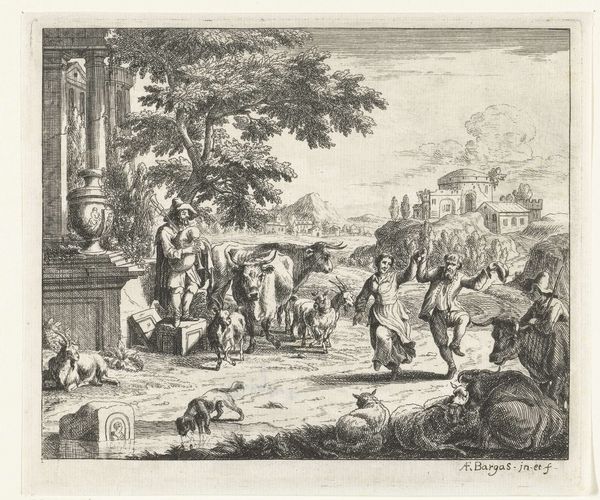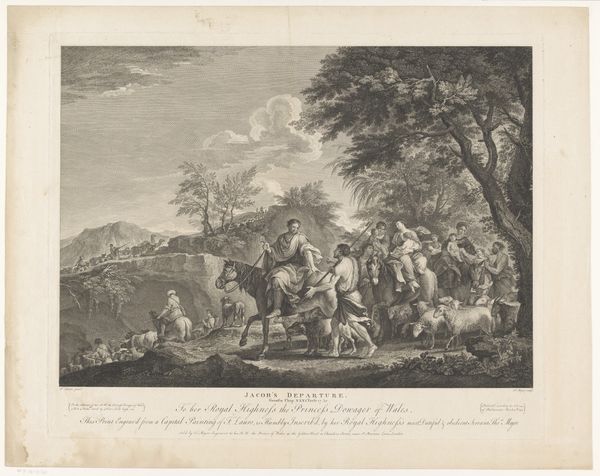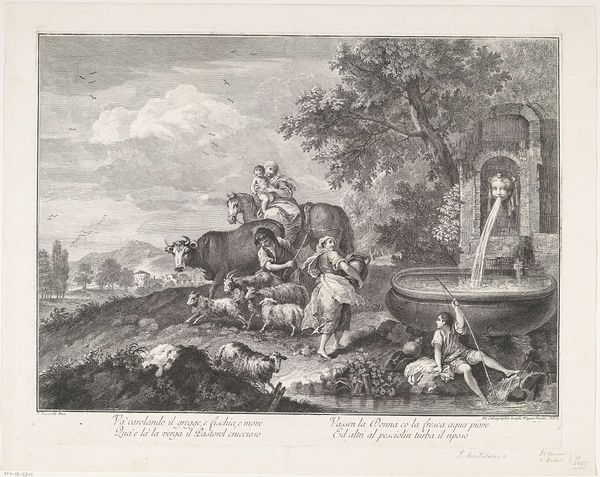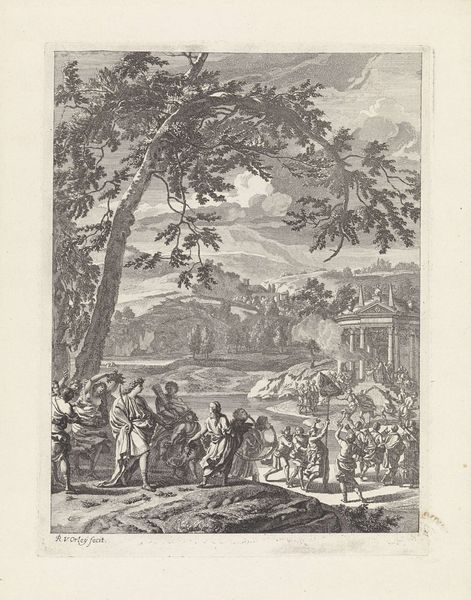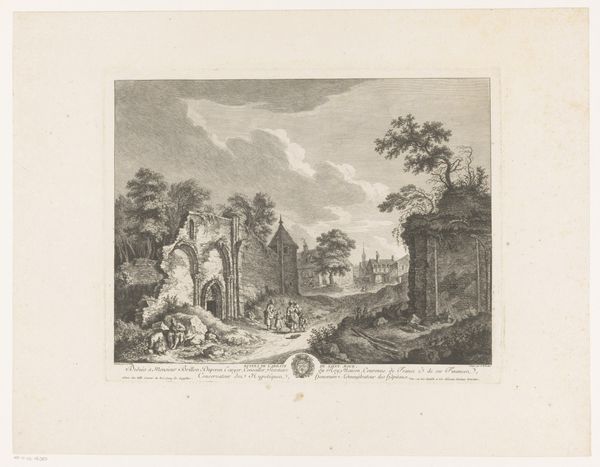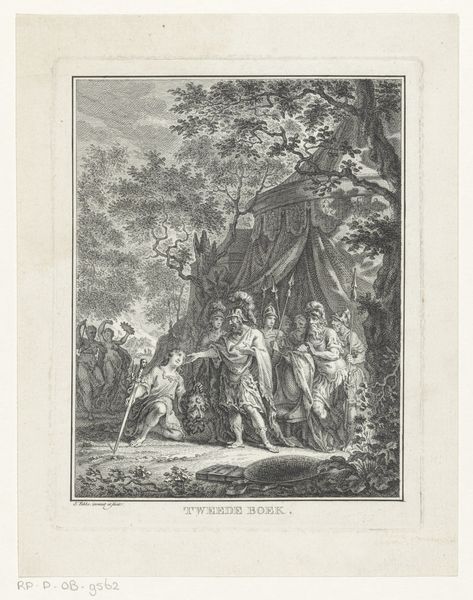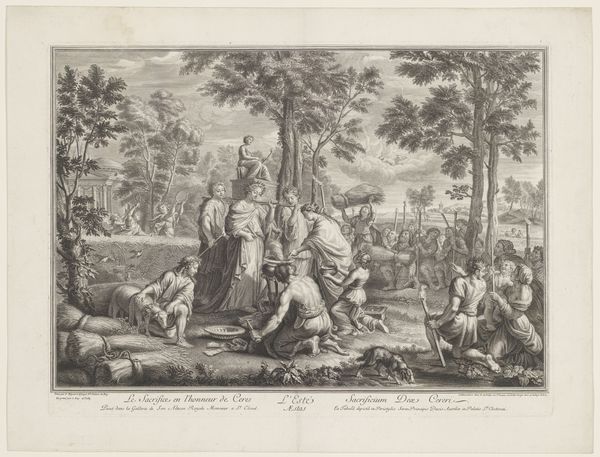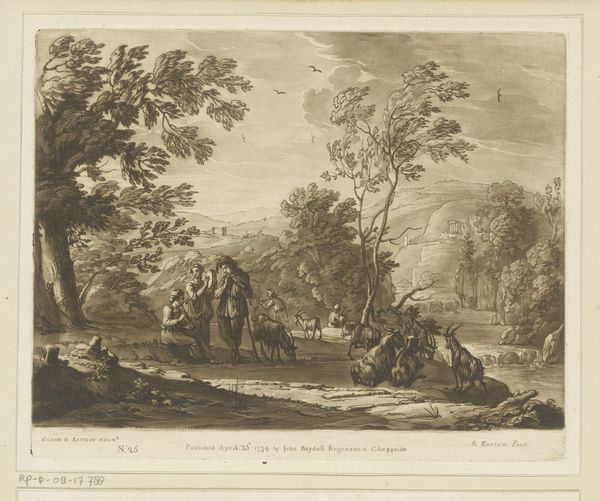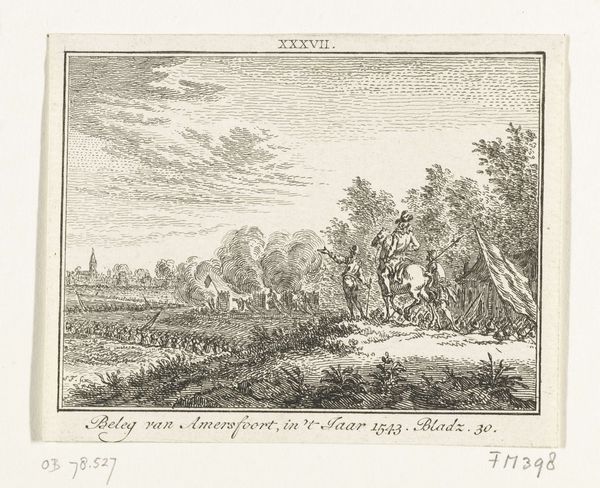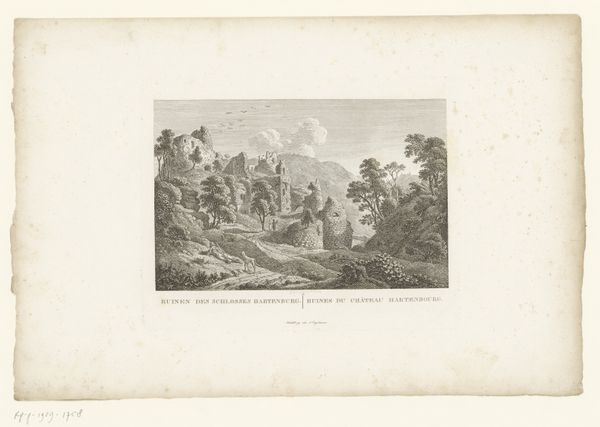
Dimensions: height 107 mm, width 120 mm
Copyright: Rijks Museum: Open Domain
Curator: This print is "Claudius Civilis, 69-70" by Simon Fokke, created between 1770 and 1784. It is currently housed in the Rijksmuseum. Editor: It has a somber, almost grim, atmosphere. The stark contrasts create deep shadows that intensify the narrative taking place. Curator: Indeed. Consider how the artist employs a limited range of tones, relying on the stark interplay of line and form. The composition is meticulously organized; note how figures are positioned relative to one another, creating a strong focal point that guides the viewer's eye. Editor: I'm drawn to the material process here. It's an engraving, a medium requiring immense skill and physical labor. Each line is deliberately etched, and we see this precise crafting translate to an almost staged feeling in the scene, reminding us that images also operate with economy and access during this period. Curator: The linear precision lends a certain gravity to the historical narrative. Note how the figures’ garments, meticulously delineated, contribute to their visual weight. Fokke isn't simply depicting a scene, but constructing an entire moral and structural universe. Editor: But how might the average citizen consume it? As an affordable print? Is its primary use pedagogical? How many hands touched this matrix? Did apprentices cut lines under Fokke’s supervision? Curator: Perhaps. I would instead challenge us to see this image as a meditation on form, not only historical representation. We could ask how these etched lines interact with one another to create the perception of depth and space. Consider, too, the function of the landscape backdrop. Editor: Even landscape painting can serve social ends. Perhaps, through considering it a medium, it challenges us to redefine the categories between "art" and "useful object". We're forced to rethink who could possess such scenes. Curator: Ultimately, analyzing form is central, not mutually exclusive to social context. We might continue asking about structure of narrative versus the image’s internal language. Editor: A fitting intersection, given both approaches. The carefulness, no matter how approached, gives new resonance.
Comments
No comments
Be the first to comment and join the conversation on the ultimate creative platform.

